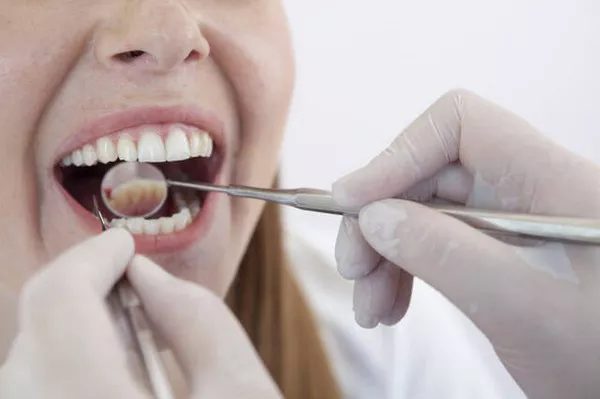Whitening strips have become a popular choice for those seeking a brighter, more radiant smile without the cost and inconvenience of professional whitening treatments. These adhesive strips, infused with bleaching agents, promise to lift stains and restore teeth to their pearly white glory. However, achieving optimal results requires more than just applying the strips; it also involves understanding how long to use them for. In this comprehensive guide, we delve into the factors that influence the duration of whitening strip use, explore recommended usage guidelines, and provide practical tips to help you achieve a dazzling smile safely and effectively.
Understanding Whitening Strip Duration: Factors to Consider
Determining how long to use whitening strips involves considering various factors that can influence treatment duration and efficacy. Some key considerations include:
Severity of Staining: The degree of discoloration on your teeth plays a significant role in determining how long you need to use whitening strips. Mild stains may require shorter treatment periods, while deeper, more stubborn stains may necessitate longer usage for noticeable results.
Whitening Strip Formula: Different whitening strip formulations contain varying concentrations of bleaching agents, such as hydrogen peroxide or carbamide peroxide. Higher concentrations typically yield faster results but may also increase the risk of tooth sensitivity or irritation.
Frequency of Use: Whitening strip manufacturers provide recommended usage guidelines, specifying how often the strips should be applied and for how long each session should last. Adhering to these guidelines is crucial for achieving desired results without overexposure to bleaching agents.
Individual Sensitivity: Tooth sensitivity varies among individuals, with some people experiencing discomfort or pain during whitening treatment. Monitoring your sensitivity levels and adjusting the duration and frequency of whitening strip use accordingly can help minimize discomfort while still achieving desired results.
Recommended Usage Guidelines: How Long Should You Use Whitening Strips?
While specific recommendations may vary depending on the brand and formulation of whitening strips, the following general guidelines can help you determine how long to use them for:
Follow Manufacturer Instructions: Start by carefully reading and following the usage instructions provided by the whitening strip manufacturer. These instructions typically outline how often to use the strips (e.g., once or twice daily) and for how long each application should last (e.g., 30 minutes to an hour).
Gradual Increase in Duration: If you’re new to whitening strips or have sensitive teeth, consider starting with shorter application periods and gradually increasing the duration over time as your tolerance improves. This approach can help minimize sensitivity and discomfort while still achieving effective whitening results.
Monitor Progress: Regularly assess the progress of your whitening treatment to determine whether adjustments to the duration of use are necessary. If you’re satisfied with the level of whitening achieved, you may choose to reduce the frequency or duration of strip use to maintain results without overexposure to bleaching agents.
Consult with a Dental Professional: If you have concerns about how long to use whitening strips or experience persistent sensitivity or irritation, consult with your dentist or dental hygienist for personalized recommendations. They can assess your oral health status and provide guidance on the most appropriate whitening regimen for your needs.
Practical Tips for Safe and Effective Whitening
In addition to following recommended usage guidelines, incorporating the following practical tips into your whitening routine can help optimize results while minimizing potential risks:
Maintain Good Oral Hygiene: Brush and floss your teeth regularly to remove surface stains and plaque buildup, which can interfere with the whitening process. A clean tooth surface allows the bleaching agents in whitening strips to penetrate the enamel more effectively.
Avoid Staining Substances: Minimize consumption of foods and beverages known to cause staining, such as coffee, tea, red wine, and tobacco products, especially during the whitening treatment period. These substances can counteract the effects of whitening strips and diminish results.
Protect Gum Tissues: Be cautious when applying whitening strips to avoid contact with the gums, as prolonged exposure to bleaching agents can cause irritation or chemical burns. Trim the strips if necessary to ensure they fit comfortably within the boundaries of your teeth.
Stay Consistent: Consistency is key to achieving optimal whitening results. Stick to the recommended usage schedule and avoid skipping treatments, even if you don’t notice immediate changes. Over time, consistent use will yield gradual improvements in tooth color and brightness.
Conclusion
Determining how long to use whitening strips is a crucial aspect of achieving safe and effective results. By considering factors such as staining severity, whitening strip formula, individual sensitivity, and following recommended usage guidelines, you can develop a personalized whitening regimen tailored to your specific needs. Additionally, incorporating practical tips for safe whitening practices can help minimize potential risks and enhance the overall effectiveness of treatment.
With proper attention to detail and consistency in your whitening routine, you can achieve a dazzling smile that boosts confidence and leaves a lasting impression.
What Mouthwash Is Best For Whitening Teeth
Should You Brush Your Teeth Before Using White Strips
Does Brushing With Peroxide Whiten Teeth































